×


We have detected your country as:
Please click here to go to the USA website or select another country from the dropdown list.
by: Rev. Rebecca J. Brimmer, International President and CEO
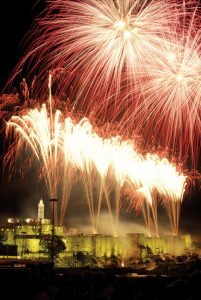
www.israelimages.com/ Tal Engelstein & Tal Paz-Fridman
As Bible-believing Christians living in Israel, my husband Tom and I have come to see Israel from a unique perspective. It is an amazing place, called in Scripture “the glory of all lands” (Ezek. 20:6, 15). An immense variety of plants and animal species are native to the Land. The cultural diversity of Jewish people from over 100 nations is charming and maddening in turn. An eclectic mix of ancient and modern assault the senses. Israel is my home and I love it dearly. Certainly life in Israel is never boring. But, if I were to pick the most wonderful experience to us, it would be the celebrations.
Years ago while living in the United States, we were reading the Bible and came to Leviticus 23, where the biblical feasts are ordained. The Bible calls them “feasts of the Lord.” As we read, we saw the words “an everlasting covenant” repeated over and over again. My husband turned to me and said, “When does everlasting stop? We have to start doing this!” So began an adventurous year filled with extraordinary experiences. We built a sukkah (booth) in our backyard during the Feast of Tabernacles, we roasted lamb on Passover, we fasted at Purim (for three days), and we joined with Israel in ten days of introspection during the Days of Awe, which culminate in Yom Kippur (the Day of Atonement). In the United States, this made us appear rather odd.
During our first year in Israel (1987–1988), Tom and I were volunteers on a kibbutz (communal settlement). Kibbutz Ginegar is a small community with only 500 inhabitants. It was a time of total immersion in Israeli society. We discovered that the cycle of life in Israel is governed by holidays, most of which are biblical. As we lived in this environment, we absorbed many new thoughts and began to understand the society we were living in. How interesting to live in a country where the national legal holidays are listed in the Bible and tell the story of God’s involvement in the lives of the nation!
On a light note, I have often heard that the holidays in Israel can be summarised as, “They tried to kill us. We won. Let’s eat!” Truly, every holiday in Israel does have special food involved. Sadly, some holidays remember difficult times when the Jewish people thankfully commemorate deliverances.
We treasure the weekly celebration of the Shabbat (Sabbath). We enjoy the spring holidays of Pesach (Passover), Purim (Feast of Esther), and Shavuot (Pentecost) and the fall holidays of Rosh HaShana (Feast of Trumpets), Yom Kippur (Day of Atonement), Sukkot (Feast of Tabernacles), and Hanukkah (Festival of Lights). We also join Israel in commemorating Yom HaZicaron (Memorial Day), Yom HaShoah (Holocaust Memorial Day), Independence Day, and Jerusalem Day, which commemorate events of modern history. I want to invite you to join me for the next few pages as I share a year in the life of Israel.
Memories are powerful motivators in our lives. Psychologists recognise the impact they have on our lives. They often try to solve our deepest emotional issues by delving into our past, our memories. Parents are taught the benefits of positive and negative reinforcement. If a child learns that a hot stove will burn, that is a negative reinforcement—the child is unlikely to want to experience that pain again. Similarly, when we reward someone with kind words or a pleasant experience, they are more likely to repeat the action.
God obviously understands the power of memories both for the positive and negative effects they have on our lives. Repeatedly in the Bible, we are told to remember. In fact, the word “remember” appears 147 times in the Bible. This is especially apparent during the celebration of holidays. All Jewish holidays have elements of remembering. Over and over again, God reminds His people to remember the good things He did for them.
Leviticus 23:2–3
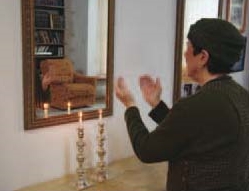
www.israelimages.com/Israel Talby
Shabbat is a very special day in Israel. In the West, we often say “thank God it’s Friday.” But, in Israel, the saying has extra significance. Friday evening marks the beginning of the Shabbat, which ends on Saturday evening at sundown. Early on Friday morning, the preparations for the Shabbat begin. Homes and kids are scrubbed, and food is prepared. You can walk in any neighbourhood of Jerusalem, and the smell of chicken soup is in the air.
Everyone has a job to do, from the youngest child to the man of the house, to get ready to welcome the Shabbat. Shabbat is referred to as a queen and is welcomed just like royalty. Only the best linens and dishes are used on the table; the best meals the family can afford are served; the home sparkles with cleanliness; and the family wears their nicest clothing. On Friday afternoon, almost every man has a bouquet of flowers in hand to take home to his wife.
In the summer time, when our windows are open, we hear the rich melodies of Shabbat songs coming from homes all around us. We hear the father blessing his family by praying for each one individually. He honours his wife by reading Proverbs 31 over her and praising her to the children and other guests. The Lord is blessed for giving the sustenance. Songs of thanksgiving are sung, most of them taken from the Psalms. Finally the meal is served. It is not a hasty eat-and-run affair, but a time of enjoying family and home in the presence of God.
On Saturday, we see families walking together to the synagogue. I love to see fathers with their young sons walking hand-in-hand on their way to the Shabbat service. All are dressed in their finest for the occasion.
There is a quietness that settles over the Land and the soul on Shabbat. Just as God rested on the seventh day of creation, so today in Israel the people rest in submission to God’s direction. Traffic is minimal. The noises of work and travel cease. No more honking horns! When we travel outside of Israel, the one thing we miss the most is the Shabbat. We have found that we value this time apart to enjoy family time and to spend quiet hours with the Lord. It is truly a precious treasure and gift from the Lord.
Esther 9:20–28
Celebrated in the Hebrew month of Adar, 14 and 15 (usually in March), Purim is a fun holiday to remember the events from the book of Esther. The book of Esther, called megila Esther, is read aloud in the synagogues. Every time the name Haman is read, the entire congregation makes loud noises to drown out the sound of his name. They boo, hiss, and shake noise-makers called rashanim. Every time the name Mordechai is read, they cheer loudly. Many costume parties are held, with outlandish costumes being the norm. The fast of Esther is observed by many. The first year we celebrated Purim, Tom and I fasted for three days as we prayed for the release of the Jewish people from oppression in the former Soviet Union. Today, over a million Soviet Jews are free, living in Israel.
Leviticus 23:5–8
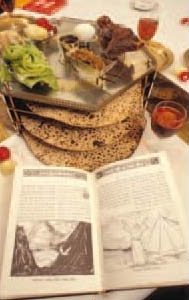
www.israelimages.com/ Richard Nowitz
Passover is one of three pilgrimmage festivals during which all the men of Israel were to come up to Jerusalem. Celebrated in the Hebrew month of Nissan, 14–21 (generally in April), Passover is an eight–day holiday. The holiday begins with a special meal called the seder (“order”) on the eve of the first day of Passover, called Erev Pesach. The meal often takes four to six hours. At the seder, the story of God delivering the children of Israel from slavery in Egypt is told in detail with song, symbolic foods, and liturgy. In virtually every Jewish home, this holiday is observed, to some degree, as families gather together to remember God’s protection and provision.
The Scripture says that during this holiday no leaven is to be eaten. For eight days, no bread is eaten, or anything else with a leavening agent in it. In the days leading up to Passover, the nation has spring cleaning on a scale most of us have never heard of. Every crumb of leaven must be found and removed from the home. For example, every item of clothing is taken out of the closets, pockets turned inside out, and everything washed. Pots and pans are taken to communal centres where they are boiled in large vats to ensure no leaven remains. On the last day before Passover begins, the last vestiges of bread or other leavened products are gathered up and ceremoniously burnt.
This holiday is rich in significance for both Christians and Jews. The Apostle Paul tells us that leaven is symbolic of sin. Oh, that we were as diligent about removing sin from our lives as the Jewish people are about removing every crumb from their homes.
In biblical times, a spotless, perfect lamb was sacrificed for the Passover meal. Did you realise that the Last Supper was a Passover meal? Yeshua (Jesus) became our Passover lamb, as the only sinless man in history, who was sacrificed for our sin.
During the Passover meal, three pieces of unleavened bread (matzah) are ceremonially set aside. The middle one is called the afikomen. At one point in the meal, it is taken out, broken in half, wrapped in linen, and hidden. Later in the evening, the children are invited to search for it, and the one who finds it rejoices greatly as they receive a gift. The matzah is striped and pierced in appearance. What a picture of the sacrificial gift of Yeshua. Yeshua also was striped by the whips of the Roman guards, pierced with a sword, broken, wrapped in linen, and hidden in the grave. Three days later, He rose again, a cause for great rejoicing by believers ever since.
Our celebration of Resurrection Day (Easter) commemorates the resurrection of Yeshua, and it actually was during Passover. Yeshua rose from the dead and became the firstfruits of the resurrection.
Leviticus 23:15–16
The time period between the second night of Passover and the night before Shavuot, 50 days or 7 weeks, is called the time of the Counting of the Omer. (An omer was a measure of grain or dry goods amounting to about 1/2 gallon or 3.8 liters.) On each of these days of counting, a blessing is said to thank God for His provision.
Traditionally, in orthodox circles, this has been a period of semi-mourning as it commemorates a first-century tragedy when thousands of rabbinical students died in a plague. Lag ba’Omer is a non- biblical holiday, celebrated on Iyar 18 (April–May), exactly halfway between Passover and Shavuot, when it is said there was a break in the plague. In the days leading up to this holiday, children gather wood, preparing for giant bonfires, which illuminate the country. No one knows how or when this tradition started.
Some other traditions associated with the holiday include the first cutting of hair for 3-year-old orthodox boys on the only day during the 50 days when hair can be cut. It also marks the only time in the Counting of the Omer when it is possible to be married, as no marriages are allowed during a mourning period.
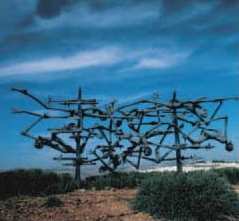
www.israelimages.com/Garo Nalbandian
On Holocaust Memorial Day, a siren is blown throughout the land and the country stops everything for two minutes as we observe a time of silent remembrance of all who died in the Holocaust. Poignant ceremonies are held, wreaths are laid at memorial sites, television features Holocaust programming, and places of entertainment are closed for 24 hours as the nation collectively mourns her loss.
Israel is a young country, which rose from the ashes of the Holocaust. Six million Jews lost their lives in Nazi-dominated Europe in the Second World War, which ended in 1945. One-third of world Jewry disappeared into death during eight years of unimaginable horror. It has left a deep scar in the soul of the people. Many of my Jewish friends are children of survivors; some survived as children, and many lost family members.
Holocaust memorials dot the country, but Yad VaShem in Jerusalem is the largest and most famous. Dignitaries visiting Israel nearly always include a visit to Yad VaShem, and it is noted in the press if they don’t visit! I have been coming on tours to Israel since I was a thirteen-year-old child and have visited Yad VaShem many times in my lifetime. It is difficult for me to view the images of death, degradation, and suffering. But, it is even more difficult for Jewish people. Often Jewish tour guides will stand outside and let their tourists experience it for themselves. It is simply too painful for them to go into the memorial/museum.
As time goes by and survivors have aged and passed away, it has been important to record their stories, so that future generations will know from firsthand witnesses. Yad VaShem (literally, “hand and name”) has huge archives of firsthand reports in written, video, and photographic form. Books filled with the details of those who were murdered line walls. Their personal effects are on display. All in an effort to remember what happened, combined with a fierce determination not to be victims of a similar atrocity ever again.
Jewish young people are taken to the Auschwitz and Birkenau death camps in Poland in an annual pilgrimmage called the March of the Living. Thousands march every year in a solemn 3-kilometre (1.8-mile) walk, often in the rain, from Auschwitz to Birkenau. They walk with Israeli flags as if to say, “You tried to kill us off as a people, but am Israel chai (the people of Israel live)!” Bridges for Peace has participated in this march, carrying a large banner that says “we will never forget!” as we stand in solidarity with the Jewish people and express Christian love to them.
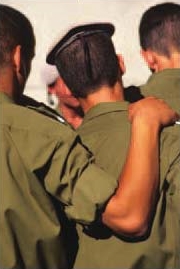
www.israelimages.com/ Israel Talby
The holiday that had the most impact on me the first year we lived in Israel was Yom HaZicaron, Memorial Day. This is the day when Israelis remember those who died in terror attacks and the men and women who lost their lives defending the country.
When I lived in the United States, although we had a Memorial Day, it had little meaning for me personally. I hadn’t lost someone close to me in war, and death hadn’t touched me significantly. I would read that a U.S. soldier had died somewhere, but I never knew any of them. It is far different to live in a country with only 6 million people (as compared to nearly 300 million in the USA). In Israel, Yom HaZicaron is a universally observed day of remembrance and mourning. What makes it so different?
Israelis live dangerously. The country is perpetually at war or in a state of considerable tension. They know no other reality. At the age of 18, almost every Israeli male and female are inducted into the military. The men serve three years, and the women serve for two years. Men are then in the reserves, serving as much as a month a year until age 45.
In a land where hostilities have never totally abated, this is a time of fear. Parents dread the day their children enter the army. Many have shared with me that for the entire time their children are in the army, they don’t sleep well at night. Any phone call can be news of tragedy. The people of Israel live in dread of losing their sons, daughters, husbands, nephews, grandsons, and brothers. Many grew up without a father.
This is poignantly felt as we read the following quote, found in the memoirs of well-known Israeli author Moshe Shamir, which he wrote in 1968. “My son is named after my brother who fell in the War of Independence. This was exactly 20 years ago when the almond trees of 1948 were in full bloom. I am named after my father’s brother, who fell in the ranks of the Red Army at the gates of Warsaw. This happened in1920. My father was named after the brother of his father, who was murdered in
the Ukraine during a pogrom by rampaging peasants. This was 1891…Are we now still at the beginning of the road? At the middle? At the end? I only know this; in this half century in which I live and breathe, the fear of death has never left our home…”
Since 1948, everyone knows someone who lost their lives in defense of the country. As of Yom HaZicaron 2005, 21,954 soldiers and security personnel have fallen in defense of their country, during five major wars: Independence, Sinai Campaign, Six Day War, Yom Kippur War, and Operation Peace for Galilee, plus the ongoing war of attrition with some neighbouring states, and the Oslo War with its accompanying terrorism. In relation to the total population, this is a huge number of people.
That first year in Israel, when we lived at Kibbutz Ginegar, I would read in the paper of the death of a soldier and go to work and find sad people—nearly always, someone on the kibbutz had a connection to the person who had died. It seems that much of the lives of Israelis are defined by their losses.
On the eve of Yom HaZicaron, a siren sounds throughout the country. The entire nation stops their activities and stands still in memory of the courageous soldiers who gave their lives for their country. The next morning, the siren sounds again. Cars stop on the highways while their drivers stand beside them in silent thought. Many remember family members or friends who died.
At Kibbutz Ginegar, the entire community gathered for a memorial service. The dim lights of memorial candles illuminated the pictures of seven men from the kibbutz who had fallen in battle. Families were comforted by friends, memories were shared of the seven in a solemn time, which is engraved on my memory. At the time, I didn’t understand Hebrew, but I could feel the deep emotion and the pain of the people I had come to care about.
This scene is repeated in every corner of the Land, as the people recognise the great human sacrifice statehood has required. Every Yom HaZicaron, I join in the time of remembering as I identify with the Jewish people. I pray for the peace of Jerusalem and for the comfort of God for His chosen people.
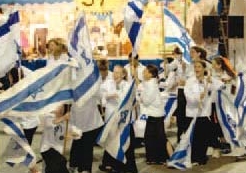
www.israelimages.com/Win Robins
Holidays in Israel start at sundown (called the eve of the holiday) and finish at sundown the following day. Independence Day begins at sundown immediately following Yom HaZicaron. When I first moved to Israel, it seemed so hard to go from the deep mourning of Memorial Day to the unrestrained, unabashed celebration of Independence Day. At first it seems incongruous to celebrate with flags, parades, fireworks, and picnics. But, such is the way of the Jewish people. Even at weddings, a glass is crushed under the foot of the bridegroom so that all present will remember the destruction of the Temple. Maybe it isn’t so strange after all. If soldiers hadn’t been willing to give their lives, there would never have been a state.
The streets of the cities turn into one great big party on Independence Day. People bop each other on the heads with plastic hammers, spray foam on everyone, sing, dance, and rejoice in the fact that the Jewish people have a state in Israel. The parks are full of picnickers who eat, play games, and watch Air Force flyover shows in the sky above.
Leviticus 23:15–22
What’s the difference between Shavuot, the Feast of Weeks, Hag HaBikkurim, the second Feast of Firstfruits, the feast of the Harvest, and Pentecost? Absolutely nothing! They are different names for the same biblical holiday, each name representing some facet of its meaning.
The most familiar Hebrew name for this holiday is Shavuot (“weeks”). It obtained this name because the Israelites were to start counting seven full weeks from the day after the Sabbath of the week of Passover (also known as the first Feast of Firstfruits, Lev. 23:9–14) in order to arrive at the right day to celebrate Shavuot.
This holiday is known by yet another more familiar name, Pentecost, a Greek word literally meaning “fiftieth day,” in reference to the fact that it is celebrated 50 days, or seven weeks, after the Feast of Firstfruits. On the Hebrew calendar, it is celebrated on Sivan 6 (usually in June).
The Jewish people celebrate the giving of the Torah (Gen.–Deut.) at Mount Sinai on Shavuot. It was on this holiday that the Holy Spirit fell on 120 of Yeshua’s followers (Acts 2). They spoke with other tongues, and 3,000 were saved. Shavuot is the second pilgrimmage holiday when all Jewish men were commanded to come up to Jerusalem. So, the city was undoubtedly crowded with Jewish people from many places, speaking many languages. How astonished they were when the disciples were speaking in their languages! What an amazing Shavuot that was!
Next month we will continue with Israel’s holidays as we begin with Jerusalem Day and end the year with fall’s High Holy Days.
This Teaching Letter is taken from
our new book, Israel and the Church:
God’s Road Map, an anthology written
by Rebecca J. Brimmer and several
Bridges for Peace leaders around the
world. Other chapters include
“Yeshua Wore a Prayer Shawl,”
“The Scriptural Basis for Supporting Israel,”
“The Significance of Jerusalem,”
and “Christian Anti-Semitism.”
Order your copy now.
All logos and trademarks in this site are property of their respective owner. All other materials are property of Bridges for Peace. Copyright © 2024.
Website Site Design by J-Town Internet Services Ltd. - Based in Jerusalem and Serving the World.